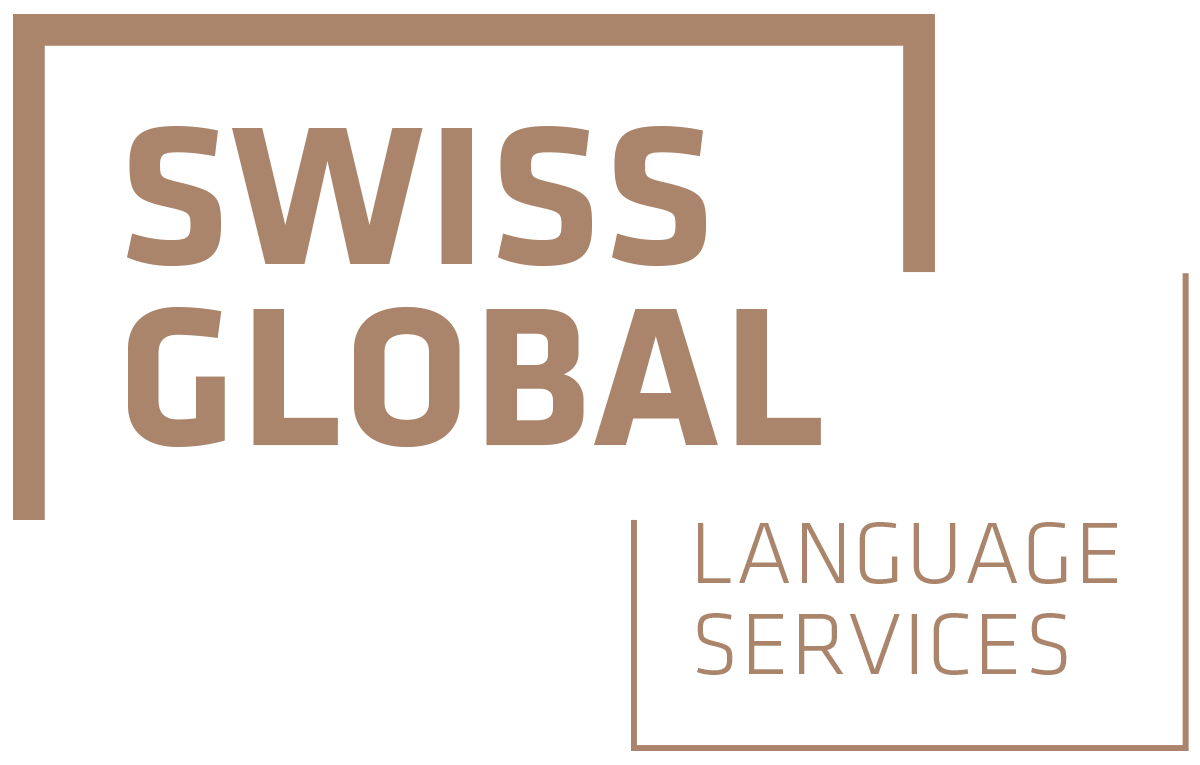This website uses cookies so that we can provide you with the best user experience possible. Cookie information is stored in your browser and performs functions such as recognising you when you return to our website and helping our team to understand which sections of the website you find most interesting and useful. You can find more information in our privacy policy.

FAQ
Do you have any questions about a specific topic?
Enter a term in the field below.
The costs of a transcription will depend on the length of the source medium, the language, the number of speakers and the quality of the recording. Feel free to contact us here at any time for a quote.
I costi per una trascrizione variano a seconda della lunghezza del testo, della lingua, del numero di partecipanti e dalla qualità audio dei file. Contattateci qui per un preventivo.
Le coût d’une transcription varie en fonction de la longueur du média source, de la langue, du nombre de locuteurs et de la qualité d’enregistrement du fichier. Contactez-nous ici pour un devis.
Die Kosten einer Transkription variieren je nach Länge des Ausgangsmediums, Sprache, Sprecherzahl und Aufnahmequalität der Datei. Kontaktieren Sie uns hier für einen Kostenvoranschlag.
Un servizio di revisione consente di verificare il testo da un punto di vista linguistico e dello stile. Il testo viene ottimizzato tenendo conto del pubblico destinatario, dello stile e del messaggio. Inoltre, vengono corrette l’ortografia, la sintassi, la leggibilità, la grammatica e la punteggiatura. Maggiori informazioni sono disponibili qui.
ISO standards are gaining in popularity within the language sector. There are currently three standards that have been specifically issued for our sector: ISO 17100:2015 for translation services, ISO 18587:2017 for post-editing and ISO 20771:2020 for legal translations. More information and what you should look out for when making your choice can be found here.
The cost of a specialised translation will depend on the size of the document and the language combination required. You can contact us here to get a tailor-made quote for your project.
Rates often range between CHF 2.20 and CHF 4.50 per line. The price of a translation depends on various factors such as the text’s length, language combination, format, and optional additional services such as express delivery, proofreading or revision. The following blog post in German provides more information about pricing: “How much does a translation cost?”
In der Sprachindustrie werden ISO-Normen immer beliebter. Aktuell gibt es drei Normen, die spezifisch für unsere Branche ausgestellt wurden: ISO 17100:2015 für Übersetzungsdienstleistungen, ISO 18587:2017 für Post-Editing und ISO 20771:2020 für Rechtsübersetzungen. Mehr dazu und worauf Sie sonst noch bei der Wahl achten sollten, erklären wir Ihnen hier.
Une relecture consiste à vérifier les aspects linguistiques et stylistiques de votre texte. Ce dernier est optimisé en tenant compte du groupe cible, du style et du message. En outre, l’orthographe, la syntaxe, la lisibilité, la grammaire et la ponctuation sont aussi corrigées. Vous trouverez davantage d’informations à ce sujet ici.
Il prezzo della Sua traduzione specializzata dipende dal volume dei documenti e dalla combinazione linguistica desiderata per il servizio. Ci contatti qui per ottenere un preventivo personalizzato.
Le prix d’une traduction spécialisée dépend du contenu du document et de la combinaison de langues de la prestation. Contactez-nous ici pour obtenir un devis personnalisé.
Die Vielfalt ist gross – von professionellen Übersetzungen über Post-Editing bis hin zur technologischen Unternehmenslösung ist fast alles dabei. Egal wie gross oder klein ihr Projekt ist: Sprachdienstleister haben die Erfahrung und Technologie, um Ihnen zu helfen. Unsere Leistungen finden Sie hier.
Beim Korrekturlesen geht es in erster Linie um die Verbesserung von Zeichensetzung, Rechtschreibung und Grammatik, während das Lektorat zusätzlich die stilistische Überarbeitung übernimmt. Mehr dazu finden Sie in diesem Blogbeitrag: Lektorieren und Korrekturlesen: Was ist der Unterschied?
Ein Übersetzungsbüro kümmert sich um Übersetzungen und bietet evtl. auch verwandte Dienstleistungen wie z. B. Lektorate an. Sprachdienstleister kümmern sich hingegen um das ganze Sprachpaket. Das breitgefächerte Dienstleistungsangebot reicht in der Regel von der Übersetzung bis zur innovativen technologischen Unternehmenslösung. Egal ob ein komplexes Übersetzungsprojekt, eine mehrsprachige Werbekampagne im Ausland oder Dokumente für die Unternehmenskommunikation: Sprachdienstleister haben die Erfahrung und Technologie dazu. Mehr dazu finden Sie in diesem Beitrag: «Unterschiede zwischen einem Sprachdienstleister und einem Übersetzungsbüro»
Ein Lektorat prüft Ihren Text in sprachlicher und stilistischer Hinsicht. Dabei wird der Text mit Blick auf die Zielgruppe, den Stil und die Botschaft optimiert. Des Weiteren werden Rechtschreibung, Syntax, Lesbarkeit, Grammatik und Zeichensetzung korrigiert. Mehr dazu finden Sie hier.
Der Tarif bewegt sich oft zwischen CHF 2.20 und CHF 4.50. Die Kosten einer Übersetzung hängen von verschiedenen Faktoren ab wie Textmenge, Sprachkombination, Format und optionale Zusatzdienstleistungen wie Express-Übersetzungen, Korrekturlesen oder Revision. In folgendem Blogbeitrag finden Sie weitere Information zu den Preisen: Was kostet eine Übersetzung?
Editing checks the language and style of your text. Your text will be optimised for your target group with regard to its style and its message. In addition, the spelling, syntax, readability, grammar and punctuation will be corrected. Find out more here.
A translation agency takes care of translations and may also offer related services such as proofreading. Language service providers, on the other hand, take care of the whole language package. The wide range of services that they offer usually extends from translation to innovative technology-driven corporate solutions. Whether it is a complex translation project, a multilingual advertising campaign abroad, or documents for corporate communication – language service providers have the needed experience and technology.
You will find more about this in the article: “Differences between language service providers and translation agencies in Switzerland”.
Proofreading is first and foremost about improving the punctuation, spelling and grammar, whereas editing also examines the style. You can find out more in this blog article: Editing and proofreading: what is the difference?
A wide variety of services are offered – from professional translations and post-editing to technology-driven corporate solutions, almost everything is included. No matter how large or small your project: language service providers have the needed experience and technology to assist you. You can find our services here.
Machine translation
In Post-Editing of Machine Translation (PEMT), a human translator checks and optimises a translation that was generated by machine. As well as grammar, spelling and punctuation, the overall quality and accuracy of the translation are verified.
Machine translation refers to the automatic translation of a text using machine translation software and no human interaction. This method is used by translators in conjunction with a post-editing step as it saves money and time and strikes a balance between efficiency and quality.
A thorough revision by a human translator, known as post-editing, is necessary to ensure that a machine translation can be used with confidence. This step is carried out after the machine translation has been completed and guarantees higher-quality translations.
There is no clear-cut answer to this question. Certain text types are better suited to it than others. As a rule, excellent results can be delivered for texts with non-technical vocabulary and simple sentence structures.
Things become tricky if you are dealing with content that is ambiguous, needs to be interpreted logically, or depends to a great extent on the context. This is where the machine translation approach reveals its limitations and often generates nonsensical translations.
NMT utilises a neuronal network that functions in a manner similar to the human brain and is capable of independent learning. In order for this system to generate reliable translations, it needs to be fed an immense amount of data from which it can “learn”.
